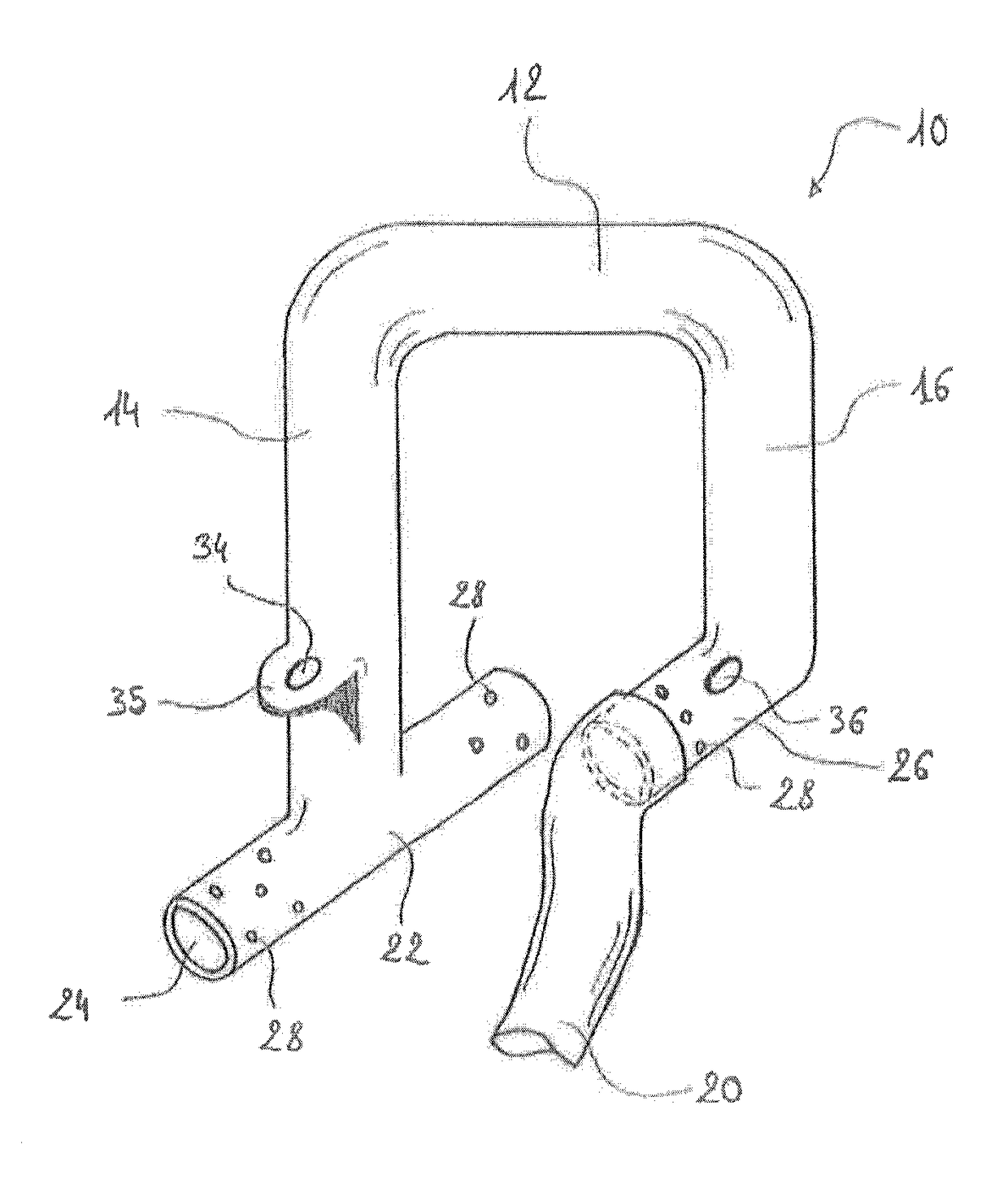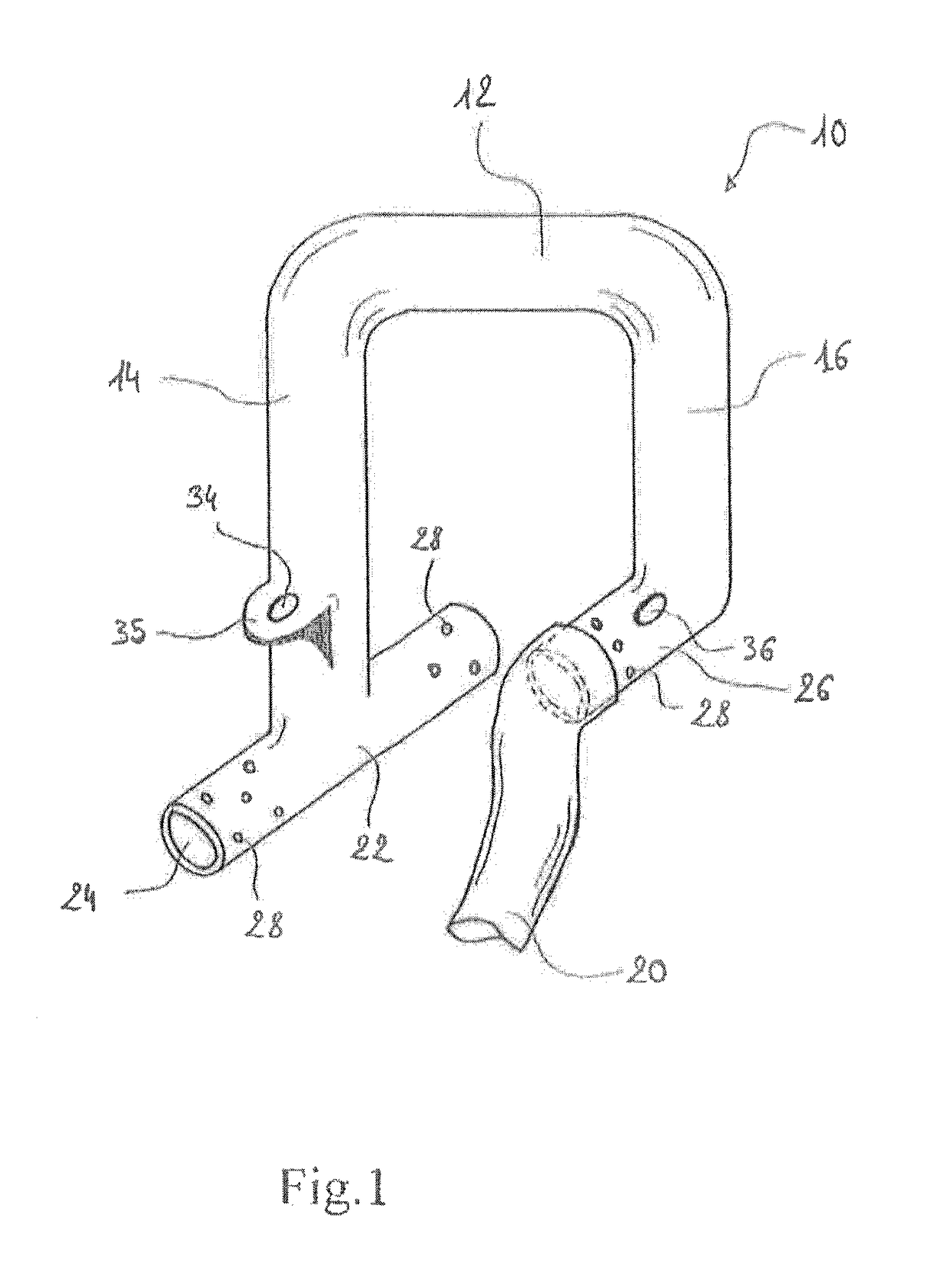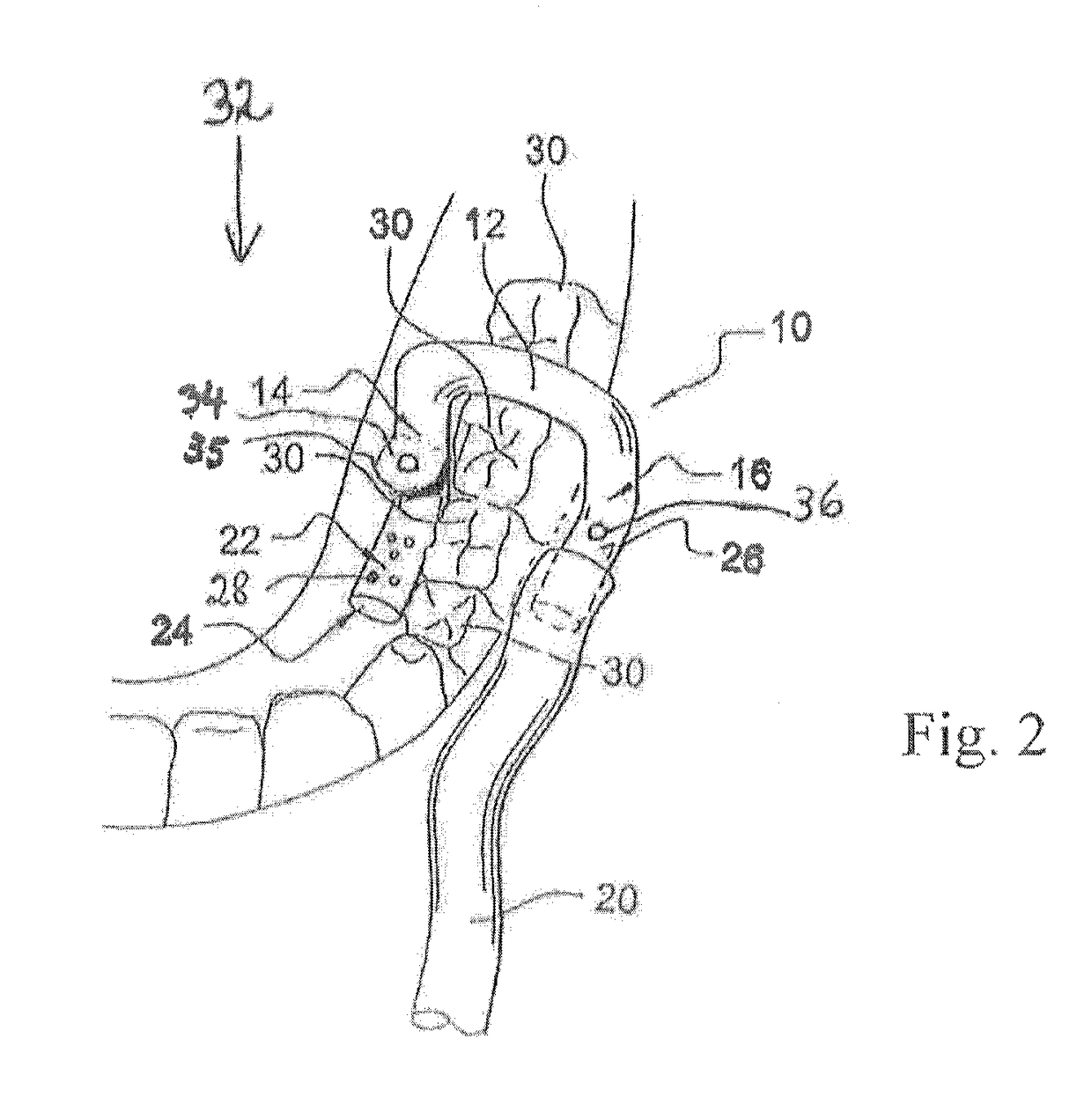Cannulae for evacuating saliva and/or blood flow
a saliva and/or blood flow technology, applied in the field of cannulae for evacuating saliva and/or blood flow, can solve the problems of overactity of salivary glands, difficulty in practicing operation, and difficulty in removing salivary flow and/or blood along with irrigation fluid or fluid for cooling dental instruments
- Summary
- Abstract
- Description
- Claims
- Application Information
AI Technical Summary
Benefits of technology
Problems solved by technology
Method used
Image
Examples
Embodiment Construction
[0036]The cannula 10 illustrated in FIG. 1 is a cannula or tube for evacuating saliva and / or blood flow and is intended to be used on a patient undergoing dental treatment.
[0037]The cannula 10 is formed of three tubular conduits, namely a first hollow tubular branch 14, a second hollow tubular branch 16 and a hollow arcuate tubular part 12 connecting the two branches. These three conduits form the cannula 10 having the general shape of a yoke or an inverted “U”. The cross-section of the cannula 10 may be circular or oval and have a diameter of about 3 mm to 6 mm.
[0038]The arcuate shape of the cannula 10 as well as the presence of the first branch 14 enable the cannula 10 to be placed directly on the dental arch and to be maintained in position without it being held.
[0039]The first branch 14 of the cannula 10 terminates in a tubular member 22 formed of two portions situated on either side of the end of the first branch.
[0040]The tubular member 22 includes one or more suction holes 28...
PUM
 Login to View More
Login to View More Abstract
Description
Claims
Application Information
 Login to View More
Login to View More - Generate Ideas
- Intellectual Property
- Life Sciences
- Materials
- Tech Scout
- Unparalleled Data Quality
- Higher Quality Content
- 60% Fewer Hallucinations
Browse by: Latest US Patents, China's latest patents, Technical Efficacy Thesaurus, Application Domain, Technology Topic, Popular Technical Reports.
© 2025 PatSnap. All rights reserved.Legal|Privacy policy|Modern Slavery Act Transparency Statement|Sitemap|About US| Contact US: help@patsnap.com



